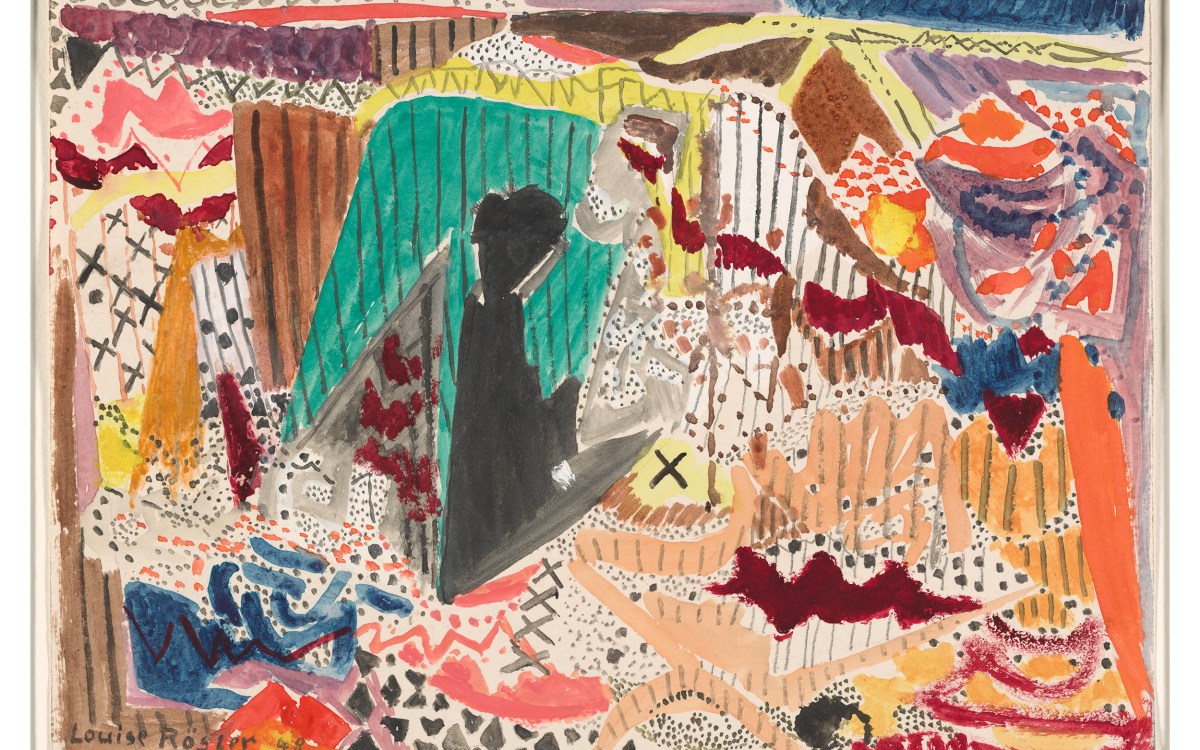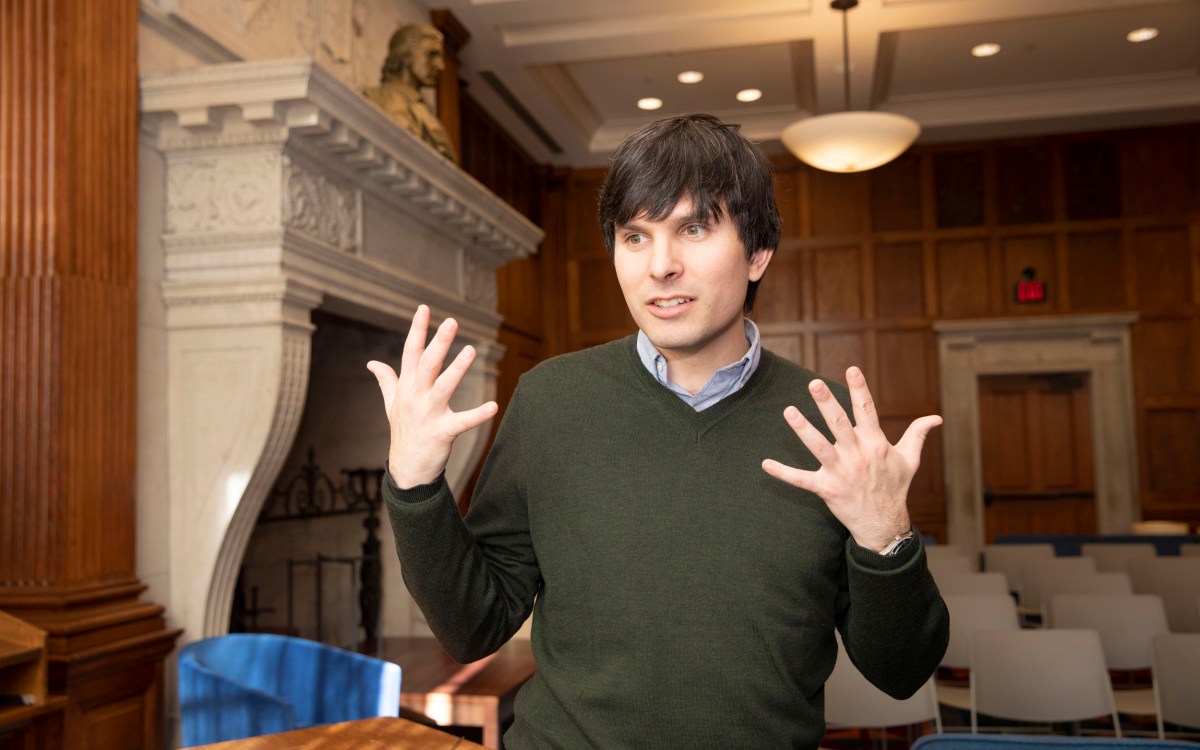
In Monday’s Center for Ethics talk, Quinn White discusses the tendency to reduce art and literature to a binary: good or bad.
Kris Snibbe/Harvard Staff Photographer
A case for the ‘beautiful, troubling’ complexity of art
Philosopher Quinn White sees a big flaw in common response to creative work
For some people, ethics or aesthetics alone can determine the value of a work of art. Quinn White thinks they’re missing the bigger picture.
“It seems a bit reductive,” the assistant professor of philosophy said Monday during a discussion at the Safra Center titled “Beautiful, Troubling Art: A Defense of Non-Summative Judgments.”
“It demands that when we account for the ethical value of a work … the ethics and the nonethical aesthetic features all need to be squeezed into one overall evaluation,” he added.
White’s work focuses on the ethics of love and interpersonal relationships, as well as honesty, partiality, consent, and forgiveness. During his talk, he spoke about the tendency of some to limit discussions of art and literature to a binary: good or bad. But jumping to definitive conclusions about art — however tempting — is a simplification of the value it brings to society and culture, he argued.
“If [art] has an ethical flaw, then the whole work is damned,” or at least the piece is considered less valuable, he said of more extreme approaches to comment and criticism. As an alternative, White suggests “non-summative judgment,” an assessment that leaves room for a range of emotions. We should push ourselves to view art as complex social commentary that can evolve over time with shifting attitudes and cultural values, he added.
As an example, White invited the audience to consider Mark Twain’s “The Adventures of Huckleberry Finn,” which was published in the U.S. in 1885 and has been taught in schools for more than a century. In 1996, the Nobel Prize-winning novelist Toni Morrison wrote an essay about her experience reading the book at different points in her life. As she acknowledges the talent behind Twain’s storytelling along with the racially charged dilemmas the novel presents for a reader, she concludes that it is an “amazing, troubling book.” For White, this is a model case of non-summative judgment. Morrison doesn’t separate ethics from her perspective, but she also refuses to see the art as any less remarkable because it is troubling.
“We might allow for ethical features to matter without thinking that they matter as detractors or contributors to a single overall value of work,” he said. If a work of art contains unethical aspects — such as racism, misogyny, or oppression — those things should be considered in context alongside other aspects of the art’s features.
In many ways, White’s research suggests that we avoid the trap of either/or thinking and instead embrace both/and: Creative expression is an attempt to capture part of the human experience, and the human experience is complex. One challenge to this, he notes, is determining when it’s appropriate to leave room for the complex and when it’s important to come to a conclusion that results in action. His instinct is that most of the time, non-summative judgment is the better path forward.
“That makes the space for having a view that does justice to the ethical features of artwork without being flat-footedly reductive,” he said.






